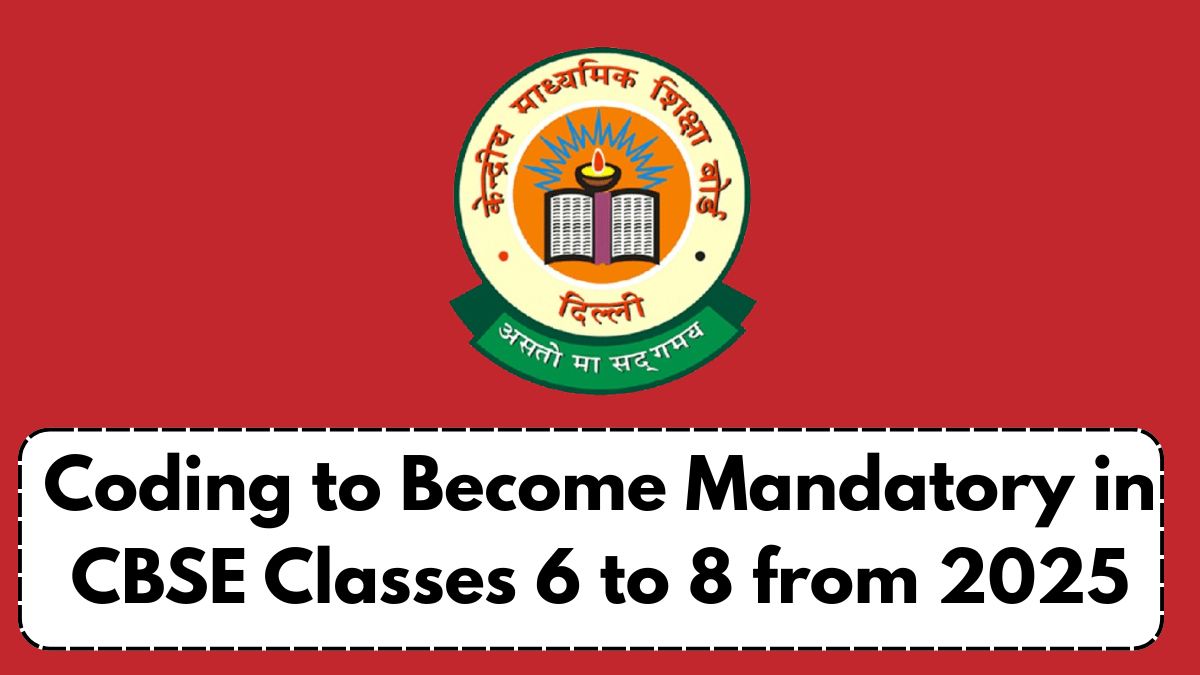Starting from the academic year 2025-26, the Central Board of Secondary Education (CBSE) will make coding a compulsory part of the curriculum for students in Classes 6 to 8. This move marks a significant shift in how foundational education is approached in India, blending computational thinking and logical reasoning into early education. The decision aims to bridge the growing gap between traditional academics and emerging tech skills, ensuring Indian students are future-ready.
As per the latest circular released in July 2025, the initiative is part of a broader school curriculum update, emphasizing digital literacy and problem-solving as essential skills. This means students will no longer treat coding as an optional activity or an after-school club interest—it will now carry the same weight as subjects like Science and Math.

Why the Shift in Curriculum?
The push to implement a coding subject CBSE 2025 arises from the National Education Policy (NEP) 2020, which advocated for more skill-based and technology-integrated learning. With artificial intelligence, robotics, and data science shaping industries worldwide, CBSE’s coding mandate for Classes 6 to 8 is seen as a strategic move to empower the next generation with core digital capabilities early on.
Coding fosters a range of transferable skills—analytical thinking, attention to detail, and algorithmic design. These are not only relevant to careers in technology but are also valuable in other disciplines, from finance to architecture. By embedding coding into the middle school curriculum, CBSE is setting the groundwork for stronger STEM engagement among young learners.
What Will the Coding Curriculum Include?
CBSE has outlined a structured coding syllabus for middle school students, which will progressively build complexity across the three grades. Here’s a look at what to expect:
| Class | Topics Covered | Tools & Languages |
|---|---|---|
| 6 | Basics of algorithms, block-based coding, logic building | Scratch, Blockly |
| 7 | Flowcharts, game design, simple app creation | MIT App Inventor, Tynker |
| 8 | Web development basics, data handling, Python programming | HTML, CSS, Python |
The curriculum is designed to be interactive, project-driven, and highly engaging. Students will be assessed not only through exams but also via real-time problem-solving assignments and collaborative tech projects.
How Schools Are Preparing for the Rollout
CBSE-affiliated schools have already begun capacity-building workshops and training programs for educators to ensure a smooth implementation. Schools are investing in digital labs and software licenses, while teachers are undergoing upskilling programs certified by reputed EdTech platforms.
Moreover, CBSE has encouraged schools to partner with tech organizations to expose students to real-world applications of coding. Some schools have initiated pilot programs to test the new curriculum structure and gather feedback before full-scale rollout in April 2025.
What This Means for Students and Parents
The decision to make coding mandatory is both a challenge and an opportunity. While it raises the bar for academic expectations, it also levels the playing field by offering every student—regardless of socio-economic background—a chance to explore technology.
Parents are advised to view this shift as a long-term investment in their children’s future. Those unfamiliar with the tech domain can support their children by encouraging practice at home, exploring free coding platforms, or engaging in tech-based hobbies. The goal isn’t just to produce coders but to nurture creative, logical thinkers.
Conclusion
CBSE’s initiative to make coding mandatory for Classes 6 to 8 from 2025 is a landmark moment in Indian education. It signals a shift from rote learning to skill development and ensures students are equipped for a digital-first future. As schools gear up for this major curriculum transformation, parents, educators, and policymakers must work together to make this transition successful and inclusive. This is more than a syllabus change—it’s a generational leap forward.
FAQs
What is the reason behind making coding mandatory in CBSE Classes 6-8?
The move aligns with NEP 2020 and prepares students with essential 21st-century skills. It reflects a necessary school curriculum update for digital readiness.
Which programming languages will be taught in Class 6 to 8?
Students will start with visual languages like Scratch and move on to foundational text-based languages like HTML, CSS, and Python.
Will schools provide training to teachers?
Yes, CBSE has mandated educator training programs to equip teachers with the skills required to teach the coding subject CBSE 2025 effectively.
Is coding knowledge now necessary for board exams?
While coding won’t appear in Class 10 or 12 board exams yet, it will be evaluated through internal assessments in Classes 6 to 8 starting 2025.
Can students without prior tech knowledge cope with this new subject?
Yes. The curriculum is designed to introduce coding step-by-step, making it accessible even to complete beginners.
Click here to know more.